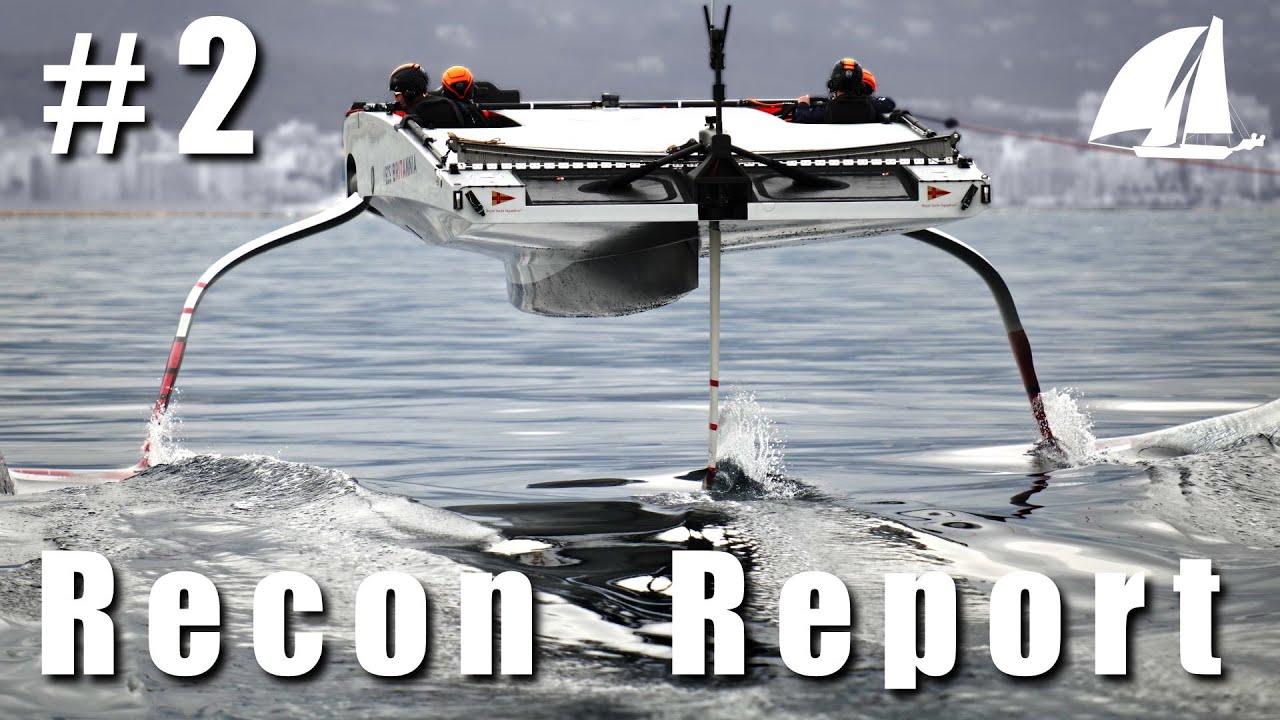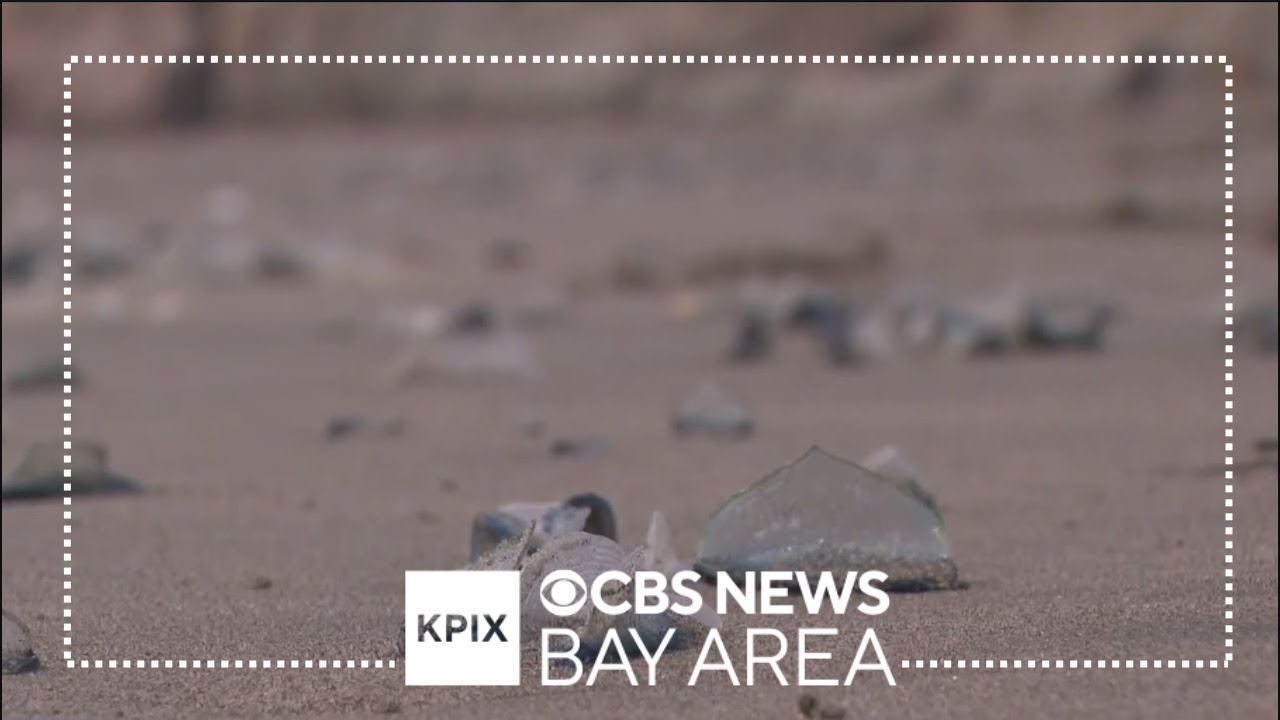Arc distrus, catarge scăpat, controversă asupra regulilor și, cel mai important, tehnologie nouă! Doar al doilea raport Mozzy Sails Recon și a fost o lună incredibil de încărcată. 0:00 – Introducere 0:20 – Prezentare generală navigație 0:50 – Alinghi Red Bull Racing 1:55 – American Magic 3:28 – ETNZ 4:33 – Luna Rossa Prada Pirelli 5:32 – INEOS Britannia 7:09 – Discuție Introducere 7:24 – Catarg de remorcare / INEOS întârzieri 9:28 – Reparații AC40 13:10 – Legacy AC75 v LEQ12 19:53 – Banana Wing 27:46 – Outro Credit lui Ben Palmer pentru amalgamarea datelor – urmează mai multe despre asta! Credit video și fotografii Recon Photographer / @America’s Cup #MozzySails susținut de Allen Brothers (fittings) Ltd Utilizați codul „MOZZY15” la https://www.allenbrothers.co.uk/ pentru a solicita o reducere de 15% #AmericasCup #AC37Recon # AC37
source
Reguli încălcate, bărci încălcate + tehnologie nouă





New format for this recon report; bringing Rob and Tom in for a longer discussion. Improvement on last month?
One interesting thing to note about the foil configurations is that the more pitch stable it is (main foils farther back) the lower your maximum lift but the higher you're righting moment because the elevator is pulling down on centerline.
To my eye as an aerospace engineering student, the Banana foils look like they're curved in the exact inverse of the deformations from flight loads, being much more curved near the root than the tip. That design makes a lot of sense because it lets you get a longer foil span in the same box and lets you get away with a thinner, lower drag foil. The hull on the ENTZ LEQ12 with the banana foil looks like it generates more planing lift than the other teams hulls, which would help them get up on the foils with less foil area and less flaps.
Given how many foiling boats don't have any way to quickly adjust the main foils, flaps are clearly not needed for control if you can get up out of the water without them. They probably don't need fancy composite design twisting either since hydrofoils just don't see gust loading the way aircraft do.
I think it heard that everyone is using norths for the cup? (might be wrong), is this limiting teams to using the same mast location from the bow, and further the same cut of sails and are they playing with their sail shape which could affect the sheeting angle of the jib?
Like the way collectively you know so much more than the more mainstream commenters around. I don't understand all of your discussions but I understand enough to be able to learn a hell of a lot more from them. And yes, probably correct. The only way you could have a moveable flap with a banana foil would be to use a horizontally stretchable hinge or a flap made of many, many elements. I don't think either are feasible options – for reliability reasons alone – let alone efficacy. So when you have eliminated the impossible, whatever remains, however improbable, must be the truth. Simplicity is key, surely, because the forces on these machines are so great. As Team Emirates NZ has already demonstrated.
Hmmm, it seems Rob has picked up the mantle of wearing odd and decorative jerseys.
It didn’t take long for the wheels to fall off INEOS 😂
Great video guys as always. Taking Robs theory as accurate which means the ETNZ foils can be thinner with less drag. Does this also in turn have a positive affect on when cavitation occurs at high speed? As a total layman i would have thought that if you have a thinner, laminar flow type wing with less of a pressure differential between the top and bottom surfaces that would mean cavitation would occur at a higher speed? Any ideas?
I don't think being late is a big detriment for ineos nor the fact that they have such a huge design team. However they have a long track record of delivering shit boats, which is certainly reason for concern.
Great stuff guys! Awesome 👍
No flaps could come with huge advantages in terms of hydrodynamic drag.
'Is it bad that they were late?' <regarding INEOS> No I don't think it is a problem, the key issue INESO face in the final design is to get their computer models to 'line up' with the practical data. They surely have a number of different designs already produced, and are simply wanting to ensure that the models they are using are 'representative', when they get the data, they will be 'more sure' of which design they will build. I like Rob's idea about ETNZs foils, and I think he makes a very solid point. If you can come up with a decent foil and simply use the attitude of the foil arms to adjust for 'best possible' attitude (fore and aft) and the height of the arms to adjust for canting, whilst using the rudder to make smaller adjustments seems the smart way to go. But this all depends if the very variable swell around Barcelona demands greater control over the pitch/lift than the rudder and much heavier arms can allow. Very interesting discussion.
Love it, great episode lads. Love the theory of foiling and the history lesson!
Thanks Tom. On it as always for all the AC analysis.
Parson me, we "recce", only the States does "recon". It's an English vernacular, much as Aluminium has an "I".
Brilliant summary and opinion though. Kudos.
Very interesting theory Rob! Just don´t know if it would be worth it. I think the flap would give far better controlability and allows to decouple the the lift from the foils from the forces generated by the hull. These aero hull forces would obviously change when the boat pitches. Controlling it via the flap most likely also allows faster reactions, more accurate changes and more stable sailing. Controlling the lift with FSI and special lay-ups is only working to a certain extent. I think it usually only allows to reduce the relationsship between boat speed and lift from a quadratic one to a linear one. So the lift still significantly increases with increasing boat speed. And are the LEQ12 foils built from carbon? Just know that the AC75 foils are built from steel and lead to meet the weight requirements. In this case the only option for twisting under load is to offset the centre of pressure from the sheer centre which probalby further reduces the effectivness. The only real benefit I see is that you could get rid of the control systems inside the foil. These are taking up volume inside the foil that causes drag. Getting rid of them would allow to build a smaller foil with less drag I think. What do you think about that?
Another great summary team!
I liked the kiterace / wing/wind foil analogy.
Maybe the most efficient (way to reduce drag and turbulences) way to control a foil flight is with longitudinal weight balance.
It would be interesting although for the teams to research & doing testing on that idea applied to AC boats.
(But can they have balasts moving forward and aft? I guess not)
So the point of all these excessive development rules and restrictions is what?
It’s not saving money. So that’s not it.
So densely populated with high level thoughts. You form a great team! I’m willing to rewatch it again and again
I agree with Rob regarding the flaps. From and aviation background a plane's wing doesn't have pitch control. Lift is controlled with speed and pitch control from the tailplane.
I love all the speculations going around. My 2 cents come from kiting, where it seems foils are going bigger and they are becoming much easier to fly year by year. To me, the flaps should bring more control options for complicated powered up maneuvers, but the med will bring 12 knots on a good day. I think the take off point was 11-13 knots of wind for the ac75, so getting that number down is the mission. I just hope they figure it out and have a proper race
Will you be doing anything on the ocean race?
The no flap theory is great! Really good gamesmanship apart from actually checking if a cleaner configuration might actually be better.
I'm assuming that the flaps were so strongly implemented as they help solve the problem of liftoff. A boat that can start flying in 5 knots of breeze is going to do very well with boat outright speed over ground and tactical advantages (knock the other boat off its foils and sail away). And a bit of extra drag from the flap will not be decisive if liftoff is earlier – hundreds of metres (early liftoff) vs dropping two tenths of a knot (drag)
But on a stronger wind day when flying is not a problem – I see a big advantage for cleaner foils with no flap.
So are we seeing a test of a flapless higher wind foil. And they will implement a flapped foil for the light stuff?
Which begs the question … during the cup are teams allowed to change their foil configuration race to race, or rather, day to day?
Chocolate fish for Rob! Airplanes control altitude through pitch by moving control surfaces at the rudder why can’t a boat?
alinghi reorganised the fluid dynamics team the other month. Considering the lack of success foiling a new bunch of engineers was probably needed.
I like the thought “ are they adjusting the flaps “ interesting 🎉
Great stuff 👍
Brilliant thoughts keep it up..
I'm with Rob
Followed Mozzy Sails from the early days, love the tech content and micro breakdown and chat, Robs on it ! keep up the great work⛵💨 the detail reminds me of everyday astronaut 👩🚀
ETNZ have alot on there plate a land speed record with Horonuku hydrogen fuel case boats and AC40s for teams that have ordered them. I think your right on the foils but I say that they didn't moved on Te Rehutai in the last cup anyway and on Te Rehutai I think we will see her come out of the shed yet with some new toys on of course?
We have certainly seen a lot of morphing foil wings of late. Also, AC72 foils obviously didn't have flaps. They had to rotate the entire daggerboard. A bit apples and oranges, but it has been done in the AC already, so if you can adjust the pitch (be it with just rudder, foil arm position, etc) it can be done. Perhaps it also has a non-swept quarter chord and thus limits the neutral point movement with pitch, making it more predictable and consistent in feedback?
I love the detail of how this optimization process is occurring as well as the level of transparency and data sharing.
Maybe in future a similar program could be run of experimentation and optimization with full data sharing to arrive at a standard design that is used in the next iteration by all the teams – the same exact design. Competition is then entirely up to skill of the sailors. The incentive to innovate and not be a “free rider” could be financially engineered into the purchasing of the standard design. Teams that spend less in development would have to spend more in buying the standard design boats. I like the innovation but does the final result in competition depend on who has the largest budget rather than the canniness and skill of crews.
I wonder if the foil could be engineered such that the C shape's deflection under load twists the flap upward. On takeoff i assume most of the load is vertical, so you could design under the assumption that a 7t load should have the foil in high lift mode and any load beyond that would be the foil resisting leeway. The foil could use deflection to bend into a less draggy shape at that point.
I can't really say that I disagree with Rob's theory I mean it kind of makes sense, at least to explore.
The worry for Ineos must be Mercedes track record of producing a complete lemon when trying to interpret a new formula.
Only problem I see with Robs no flap theory is that I think that the flaps are not so much for ride height but for changing foil shape from low speed high lift to high speed low drag/cavitation.
Can't watch this, sat through 1 advert for a minute and a half only to be thrown another one which lasts almost 3 minutes???? WTF is this shit
Its not that difficult to move a flap on a bent wing – take a look at a high performance glider. Sealing the hinge line may be a challenge and is definitely required. That's not to say I disagree with Rob! Interesting to see where this all ends up. But what is the advantage of a curved foil over a straight one? Why would you give up the ability to adjust the flap on a trials boat – even if it wasn't used very often why give up that facility. Would also be interesting to know more about why a self tacking jib might be desirable when there is a boat full of people to do the job. Could you also recap on what the AC40s are for?
Great stuff guys!
Last cup you showed data from Etnz showing how they used the foil as they did the JK which was far quicker .
Good theory.
Are the wings aloud to move in and out to increase/decrease curvature,eliminating the use of flaps.??
It is certainly possible to fly those boats without flaps, however, not having flaps will make the high speed pitch adjustments (the now typical bow down high speed foiling) much more difficult, if not limit it altogether, so I heavily doubt that they don't have the flaps.
It also seems that whilst under loading the foil might straighten up quite a bit making the hinge much less of a problem, this would also mean the foil can be made thinner, though you can't just fully rely on the foil bending as it might induce the equivalent of undesirable aeroelastic effects
Rob's theory makes absolute sense. Simple is better and all of the micro adjustments to foil flaps add drag which can slow you down. The flap fights the directional forces of the main foil to some degree, why not keep the flaps straight and just use the whole foil to change the forces as needed.